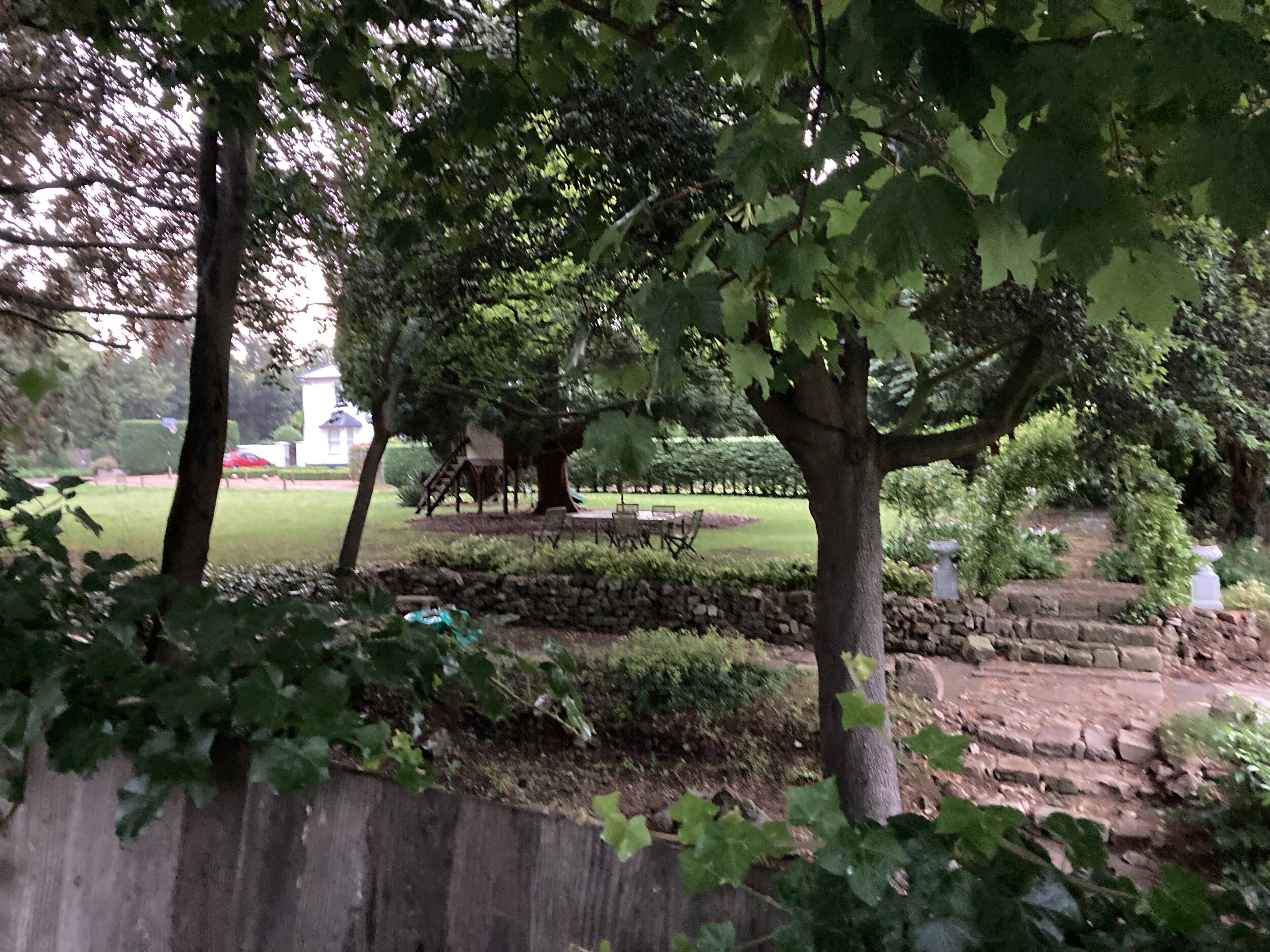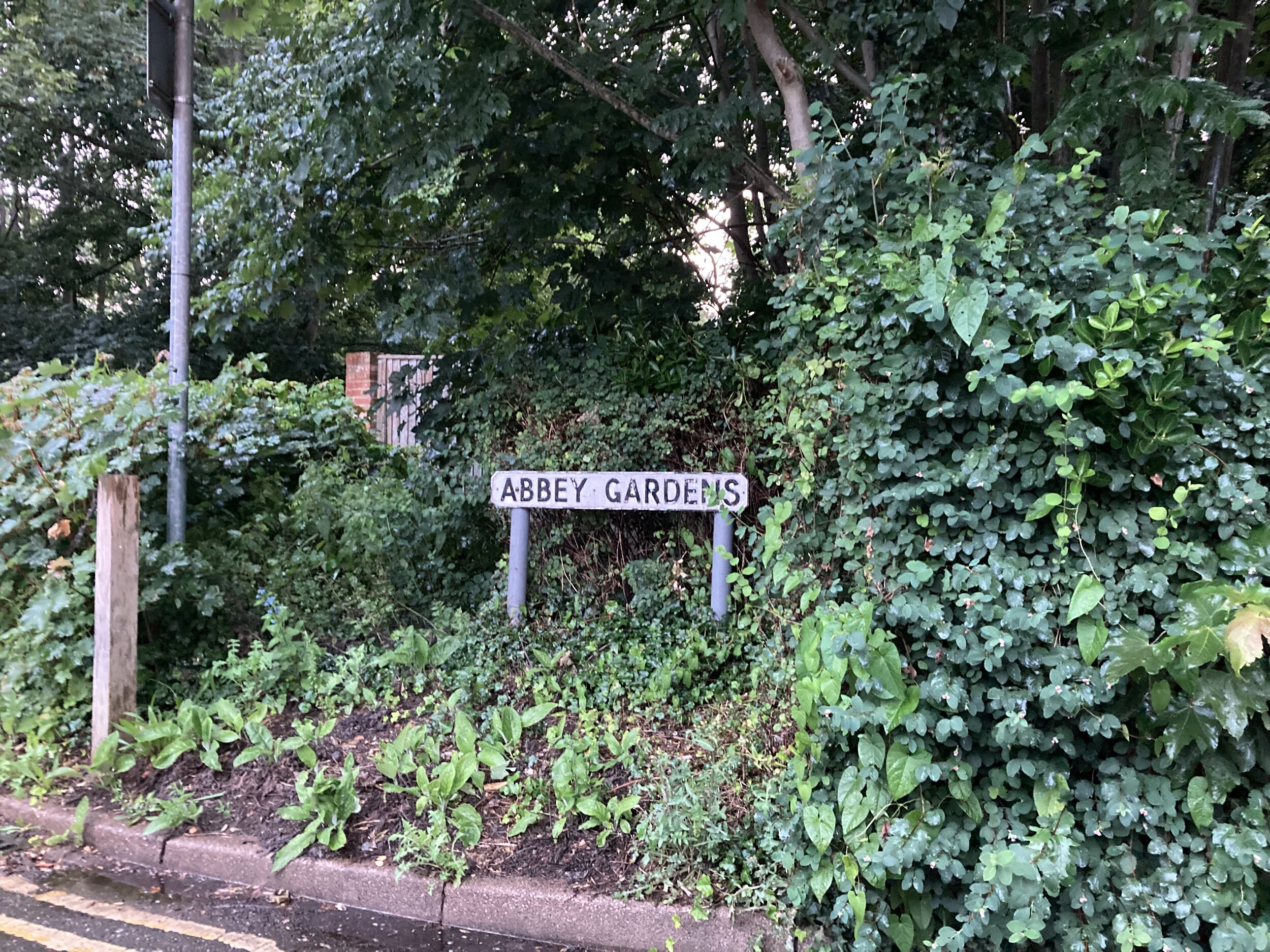In that most devilish of years, AD 666, a portion of the ancient Thames was selected for supreme spiritual significance. The awe inflicting island riverscape of the Thames, with gleaming silver mists clinging to dark grey pools of gently whispering waters, a mirror of the ever menacing sky above, must have appeared other-worldly to all who traversed it.
A soon-to-be Saint pondered the potential of this ancient space. It was a landscape straight from a dream, perhaps the exact vision which greeted many early adventurers who took Britain to be the Elysian Fields of ancient mythology.
Its prime, powerful and poignant position on a marshy island surrounded by the Thames, convinced Erkenwald (a religious man of Royal ancestry) to found a great Benedictine Abbey at which he himself would serve as Abbot. At the same time, he founded another, Barking Abbey further downstream, where his sister, Aethelburg, was to be Abbess.
It is not a stretch to imagine this liminal landscape as a gateway to the ethereal limits of existence, a place where gods and monsters could stalk the mortal realm. The river and wetlands still dominate here and amidst this celestial landscape, Chertsey remains a mysterious little treasure, a town whose character continues to cling to an old-world origin.
We were keen to explore this fulcrum of ancient spiritual reverence. From prehistoric deities bound to the river and islands, marshes and woodland right through to a centre for Christian worship and godly dominance. This area clearly held unrivaled spiritual importance. We decided that a simple day trip would not suffice. With a certain Archaeomum’s birthday celebrations in mind, we set aside a long weekend to camp under the stars and experience life in this sacred landscape firsthand.
After a short while on the road, an eager Audrey and over-excited Bramble could not hide their glee as the tent eventually towered above them and our weekend home emerged from the bulging baggage squashed into the back of our trusty transport. The campsite, right on the banks of the Thames, was perfectly positioned for adventure. We couldn’t wait to explore.
Prior to the emergence of the Abbey, archaeological excavation and investigation have discovered Roman tiles on the site and a Roman presence in this landscape seems reasonably likely. The wider area is littered with late Prehistoric unenclosed settlements and interestingly, along with a number of deposits in watery contexts, a series of structures have emerged, which have been considered as possible temples.
Chertsey Abbey was founded in AD 666 on marshes known as Cerotaesei and a gravel island called the Isle of Cerot. The original Abbey was a humble affair, with wattle and daub walls and a roof of thatched reeds, but Erkenwald, a Lincolnshire religious man thought to be related to King Offa, dedicated the Abbey to St Peter and it continued to grow. He was Abbot at Chertsey for nine years before becoming the Bishop of London.
Chertsey Abbey would grow to become the fifth largest Abbey in England, with over 50,000 acres of land. In 871, Danish Vikings sacked the Abbey, setting it on fire and pilfering all of its valuable contents. There is a belief that Abbot Beocca, a character well known to telly fans of the Last Kingdom, was murdered during these raids. Yet the Abbey was rebuilt and thrived, absorbing more land and becoming an important religious centre until it was dissolved during the dissolution of the Monasteries in 1537.
Little remains of the Abbey today. Fourteenth-century fishponds are visible as long troughs in a quaint garden. The Kitchens and ovens, also later additions to the Abbey and away from the main building, can be witnessed in reconstructed walls and monuments in the public park. The stone minister was a far more elaborate affair but is now completely absent; any remains buried under private residences and impossible to view without permission. We took a polite wander around the perimeter, but the ‘warning, beware of dog’ signs kept us at a distance!
We ventured into Chertsey to explore a little of the town, it has retained an image of old-fashioned cuteness but functions as most modern towns do, with a busy commercial centre filled with supermarkets and coffee shops. As we returned to the campsite, a decision was made (not a difficult one) to enjoy a beer or two in a delightful pub by Chertsey Bridge, the Bridge Hotel. We sat in the beer garden overlooking the glorious river and were able to rest, breathe and smile. It was a serene and calm space, despite Audrey’s eagerness to adventure and Brambles ever keen eye on other people’s dinner.
A storm was brewing in the distance though, and we raced for the comfort of our camp. The tent was mostly waterproof, and when we were safely zipped inside, the machine-gun patter of heavy raindrops was amplified in the enclosed space, a hypnotic melody of ceaseless hammering waves. We snuggled in, safe from the cold and wet, and let the gods sing us to sleep... with one eye on the encroaching drips around the edges!
The following day, we wandered along the grassy path following the Thames as it meandered through the fields and meadows. Boats cruised happily along the slow-running waters, canoes and paddleboats, barges and yachts all enjoying the splendour of the river route. Swimmers were clustered at easy access points, immersing themselves in the rejuvenating waters. Buzzing happily in the grassy meadow was all manner of wild creatures and insects, a spectacular dance of minuscule life. Audrey found an enchanting pattern, a monumental fairy ring, the haunt of fairytale creatures, and timeless magic. She danced with bramble inside the ring, tempting the mystical inhabitants to reveal themselves.
After a final night of cosy tent togetherness, complete with the distant joyous yells of elated football fans, we drifted to sleep, once again serenaded by the cloudburst sonnets from above. It had been a wet and wonderful escape, a few days to switch off from the world and be present in the moment. It was a landscape brimming with vibrant dynamism and primordial mystique. Reluctantly we packed up our temporary home, toweled off the excess drizzle, said goodbye to our kind and welcoming camp neighbours, and headed for home.
En route, we did attempt a final adventure. We were hoping to discover an Iron Age/Romano British Temple in the countryside. Armed with a vague map, an idea of where it should be in the landscape, and a possible route, along with the Sat Nav if needed, we set out. The impenetrable path was near impossible, confusing signage and disappearing tracks made progress difficult, there was no way to negotiate the track and the horizon offered nothing in the way of evidence regarding our ultimate destination. In the end, stood in the centre of a vast cow field, I gave up and headed back to the car. It was only later that I checked the satellite view and realised I was mere meters away from the site.
Next time!
So I hope you will all enjoy a drink with us to celebrate Emily Archaeomum’s landmark birthday, the big... 21...
With hope you all have a delightful, adventurous month,
From our Archaeofam to yours,
Happy July!








































